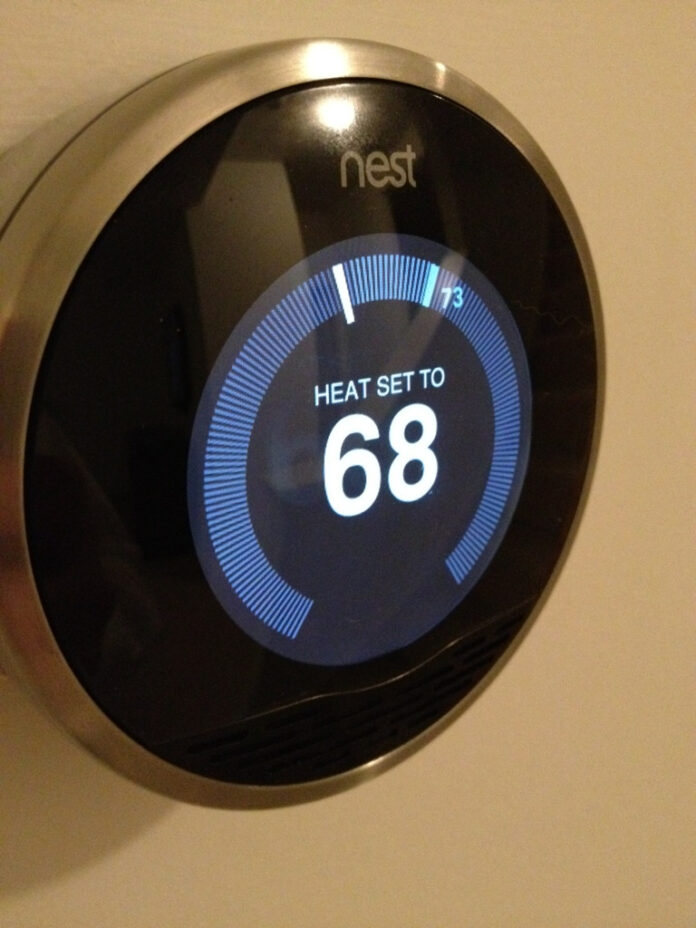Nest’s smart thermostat is one of the best-selling products on the market today. There is a good reason for that. Calculates your preferred temperature and creates an energy-efficient schedule based on that. With geofencing and your phone, the Nest Learning Thermostat and Nest E know when you’re at home or away and can increase or decrease settings to help you save even more money.
It’s always a good idea to use the Nest thermostat compatibility checker before buying one since it’s compatible with a wide range of 24-volt heating and cooling systems. You may be able to get a Nest for free or close to it if you check with your energy provider for rebates. This guide will learn about common problems with the nest thermostat in detail.
Top 5 Common problems with nest thermostat
1. Instead of releasing cold air, the vents release hot air.
If your vents blow hot air instead of cold, the most likely cause is improper wiring. You may have used the traditional wiring of your old thermostat instead of the heat pump row. The wiring can be redistributed, and the heat pump side can be used correctly by relabeling the wiring. Make sure the breakers are turned off before you handle the wires to fix this problem.
Use the Nest Compatibility Checker to determine which wires on your old thermostat will be compatible with your Nest thermostat. Take a picture of your old thermostat wiring before you begin wiring your nest thermostat. Alternately, you can add the thermostat to the Nest App and use the interactive wiring guide to fix the wires. You will notice the cool air from your vents once you have correctly connected the wires to the Nest Thermostat.
2. The “Rh” wire does not have power.
You will not be able to turn on your system when you get an E74 report showing “no power to the ‘Rh’ wire'” warning. Several factors may cause this problem.
- A breaker may have tripped. Verify that all breakers are on. The switch between the on and off positions will show you whether or not the breaker has tripped. You will need to turn off and on the corresponding breaker to determine whether your system is working.
- Irregular connections between the Rh and Rc wires. The Nest Thermostat separates Rc and Rh wires. However, in some cases, only one wire may be present. In this case, it should go to the Rh port. Try putting the red wire in the Rc port if you still receive a no power alert.
- The air handler’s fuse may have blown. You should check for blown fuses. Replace them and check if the system works.
3. The Nest Button Doesn’t Click.
One of the most common Nest Thermostat problems is the button not clicking during the initial setup. Occasionally, this results in system rebooting. A problem with the back wires usually causes this. To make your wires less bulky, you can clip them if they are too long. It is also possible that the mounting disk is not adequately secured on the wall.
The bulky wires may also contribute to this. It is recommended that you take pictures of the cables before cleaning up the wiring mess if you are concerned about how the wires are connected? Wire cutters can be used to cut off as much wire as you need, then restripe the cables. Rewiring your thermostat as before is possible when you have fresh copper to work with. You have solved the problem if you press the thermostat at the base, and it responds.
4. It gets too cold or too hot when the thermostat is set.
Read more: Each And Everything You Need To Know About Flatbed Towing In Detail
It’s most likely that the absent standard or C wire causes your thermostat to overheat or over excellent. Nest thermostats are compatible with or without a C wire. The thermostat can be recharged using your HVAC system since it uses lithium-ion batteries. Only when the Nest thermostat is running is the battery recharged when the C wire is absent. Despite its advantages, the battery can only hold a small amount of power at a time. It is, therefore, inevitable that you will receive low battery alerts unless you heat or cool your house frequently.
Follow these steps to connect the C wire:
- Install the cable between two unfinished floors in your home.
- Remove the G wire and connect it to the C terminal. Similarly, connect the HVAC G wire to the C terminal. In addition, you should get a jumper wire that connects Y and G. A central AC system requires the connection of Y and G.
5. It is blinking and unresponsive.
It is usually a sign that your Nest thermostat undergoes a software update when you see the green light blinking. The thermostat should automatically restart after a few minutes or so. You may have a frozen system if the green light has been blinking for a long time and your thermostat isn’t responding. Replace the thermostat by removing it from the base. Reconnect the thermostat by removing it from the bottom. If it doesn’t, press the thermostat for a few seconds to reset it.
What to do if your Nest thermostat is not working?
If your Nest thermostat is not working, there are a few things you can try before calling for professional help. First, check if the thermostat is getting power by looking for any signs of life, such as the screen turning on or the Nest logo appearing. If the device seems dead, check the wires and the circuit breaker to ensure that the power source is working properly.
If the thermostat is getting power but still not working, try resetting it. To do this, press and hold the Nest button for 10 seconds until the screen turns off, then release the button. Wait for a few seconds, and the Nest logo should appear, indicating that the device is rebooting. Once it finishes rebooting, the thermostat should function normally again.
If resetting the device doesn’t solve the problem, try disconnecting and reconnecting the wires from the backplate to the Nest. This can help to ensure that the wires are properly connected, and there are no loose connections. If you’re still having issues, you may want to contact Nest support for further assistance.
FAQs (Frequently Asked Questions)
- What caused the Nest to stop cooling?
If your Nest thermostat is not cooling, you have mislabeled your wiring by using the “Conventional” side of your old thermostat instead of the “Heat Pump” side. You can fix this by relabeling the wiring from your old thermostat setup using the Heat Pump side and rewiring your Nest accordingly.
- Keeping the Nest on keeps turning off the air conditioner. Why?
You may notice that your Nest thermostat keeps turning on and off because there is a faulty or missing C wire, the thermostat may have been placed incorrectly, the batteries may be low, or you may need to reset it.
- Why does Nest keep the house so cold?
There is no problem with your home’s temperature fluctuating a little above or below what’s set on your thermostat for a short time. There is often a delay in turning on your system because of the built-in delay. Maintenance bands, differentials, or temperature swings are commonly used for this delay.












